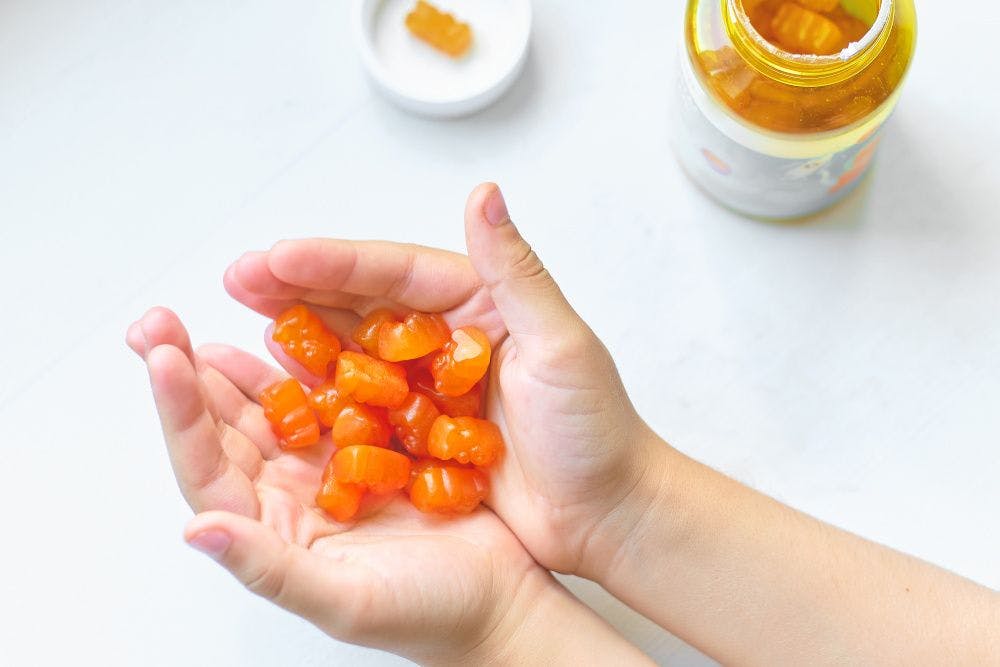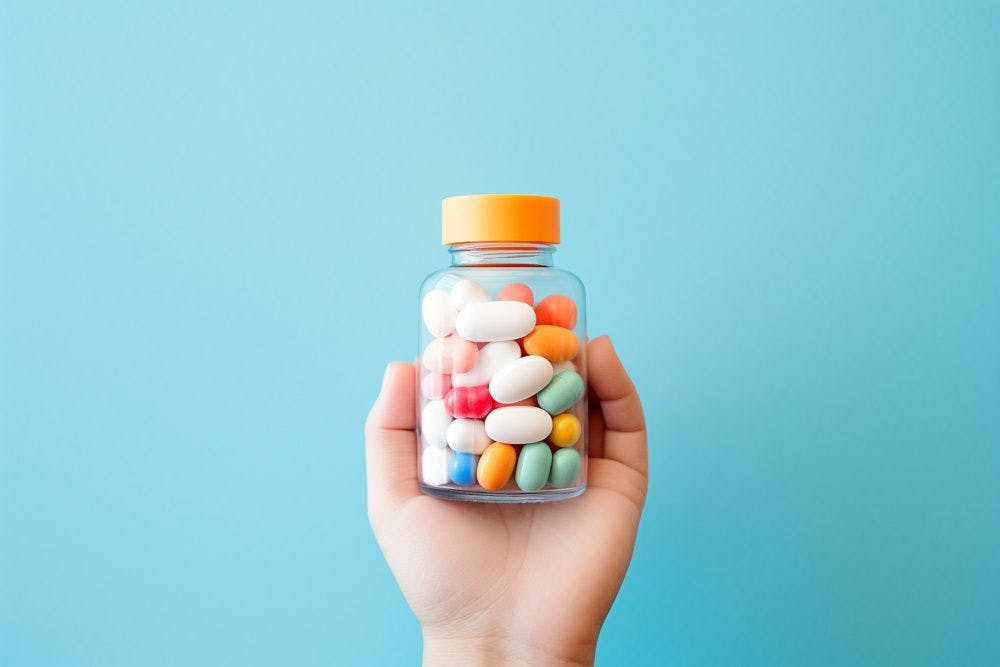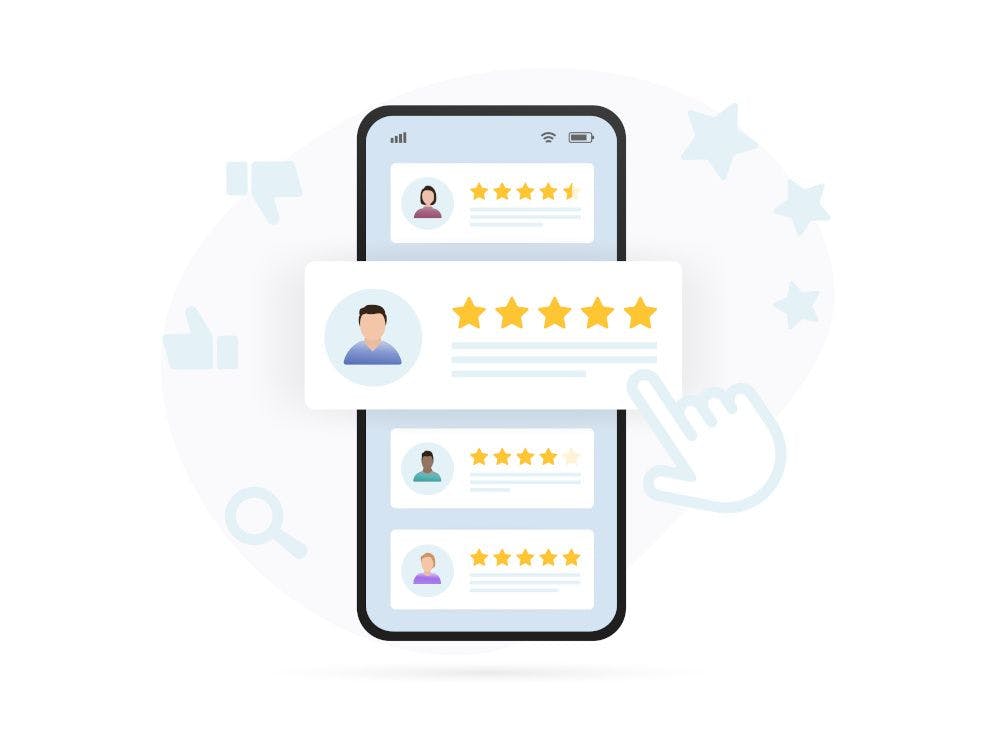Are gummy supplements difficult to make?
Can making gummies be as easy as taking them?
The delight we get from taking a gummy vitamin proves beyond doubt that nutritional supplementation can, in fact, be not just easy, but downright joyful, too.
Alas, the process of making gummy supplements doesn’t quite elicit the same elation. Sure, their fun, fruity flavors and pillowy cartoon shapes call to mind child’s play, but as Vicky Davies, global marketing director for performance, active, and medical nutrition, FrieslandCampina Ingredients (Amersfoort, the Netherlands), points out, “There’s a lot to consider when it comes to manufacturing gummies.”
Yet as gummy fans’ standards evolve along with gummies themselves, it’s only natural for the former to expect more from the latter: more variety, more potency, more actives, more “clean” cred, more…perfection. Is that even possible?
Probably not. But if they want to get close, Davies says, “Brands need to carefully select the best ingredients for their gummies and conduct rigorous R&D to ensure that the finalized product meets these high expectations.” And as luck would have it, advances in gummy tech are already bringing that goal within reach.
Going Gummy
“There’s no denying it,” Davies declares: “Gummies have taken the supplement industry by storm. You only need to spend 10 minutes at any nutraceutical trade show to see this trend in full force. From center-filled gummies to non-gelatin options and even personalized, 3D-printed gummies, the industry is creating a whole new world of chewy offerings.”
No wonder, then, that market research1 now ranks functional gummies among the fastest-growing supplement formats across North America, Europe, and Asia, says Pierre Albert Thomas, global director, Rousselot Functional Ingredients (Irving, TX).
“Between 2017 and 2021,” he notes, “the category recorded a CAGR of 56.8%2, making it the largest non-pill supplement type, with an impressive 21.3% market share3. What’s more, gummies’ popularity is still growing—despite their already meteoric rise—as they transition from the children’s supplement sector into the world of adult nutrition.”
The upshot: The global nutraceutical gummy market looks set to hit a CAGR of 14.5% between 2023 and 2028, he says, “reaching a total value in excess of $48.5 billion.4”
Ritual Experience
“There are a few reasons for this,” Davies posits. One, she says, is the confluence—or perhaps collision—of consumers’ rising interest in health with their rising pace of everyday life. “As a result,” Davies says, “they’re looking for ready-to-consume, functional-food formats that provide a nutritional boost in one convenient daily supplement.”
Sounds like a job for a gummy. Beyond that, Davies continues, “Gummies aren’t just convenient; they combat the ‘pill fatigue’ that happens when individuals feel inundated by the sheer quantity of pills they have to swallow.” Gummies, by contrast, “offer a unique consumption experience that’s chewy, tasty, and more enjoyable—all of which makes gummies more likely to encourage ritualistic daily consumption.”
Introducing Complexity
But to keep that ritual rolling, gummy supplements have to deliver a health-and-wellness benefit that’s palpable. After all, says Davies, “Consumers want products that are proven to work, so efficacy is essential.”
Alas, as Thomas points out, “For gummy supplement manufacturers, the real complexity comes with the introduction of active ingredients”—which, of course, are precisely the ingredients supplement consumers are seeking.
But that’s not the only sticking point that brands face when building functional gummies. Machinability—that is, a material’s capacity for mechanical processing—as well as setting times are “equally critical factors for ensuring that nutraceutical production lines run as smoothly and cost-effectively as possible,” Thomas says.
Cross Purposes
Consider, for example, the challenges that attend the starch-molding method common to gummy manufacture.
In essence, gummy production involves formulation, blending and cooking, depositing, drying or curing, finishing, and, finally, packaging. And “when properly established and maintained,” Thomas says, “this process is fairly simple to manage.”
In the starch-molding method, though, the deposition step meters the gummy mass into imprints left in the starch molds. After that mass cures and is removed, “the starch is recycled for use with the next batch,” Thomas explains.
So far, so good. But when manufacturers introduce active ingredients into the process, they also introduce a significant cross-contamination risk via the starch that persists from one production run to the next.
To counter this batch-to-batch contamination risk, Rousselot’s SiMoGel gelatin ingredient permits direct depositing of the gummy base into silicone or metal molds as well as blister packs, Thomas says, eliminating the need for starch trays.
And because SiMoGel boasts “groundbreaking” gelation speeds—setting in 15 to 20 minutes rather than the 24 hours that conventional formulations usually require—the ingredient “can also address process-efficiency challenges,” he adds.
Sweet Stuff
Another hurdle that gummy producers face involves consumers’ relentless pursuit of lower-sugar gummies. But as Thomas points out, that pursuit “doesn’t mean they’re ready to compromise on sensory appeal, either in taste or texture.”
“Addressing these dual demands can seem daunting,” Thomas continues, “but the good news is that the right base ingredients can make the balancing act far easier to achieve.”
On that front he commends gelatin’s “innate versatility” with making it “the perfect ingredient for formulating low- and no-sugar gummies,” adding that SiMoGel in particular “is compatible with a wide range of sweetening agents, from conventional sugar to synthetic sweeteners and even prebiotic fibers.”
Gut Gummies
And speaking of prebiotic fibers, “Gut-supporting gummies are having their time in the spotlight,” Davies observes. Per SPINS’s metrics5, both prebiotic and probiotic gummies enjoyed 18.7% growth in 2021, “and gut health is still a top priority for consumers in 2023,” she insists. “Therefore, gummies fortified with gut-health goodness offer huge potential for brands looking to make waves in this market.”
But boosting gummies’ fiber content is tougher than you’d think because fiber is a relatively bulky active, and efficacious volumes can overwhelm small formats like gummies.
Davies claims that FrieslandCampina’s Biotis GOS-OP High-Purity prebiotic fiber lets formulators deliver beneficial doses even in gummies thanks to a processing method that effectively concentrates the ingredient’s galacto-oligosaccharide content to 94%.
This means that inclusion levels as small as 2 grams can provide efficacy, Davies says, “thus making the process of formulating fiber into gummies easier6, while also making manufacturers’ lives easier and their gummies stronger.”
Better Benefits
And as far as Thomas is concerned, this theme of doing more with less represents a refreshing turn for the gummy-supplement space. “In the past, nutraceutical brands faced a dilemma: Reduce the active-ingredient content of gummies to mitigate interactions with the base, or switch to a more conventional—a.k.a. less-exciting—supplement format.”
That dilemma is fading into memory thanks not only to increasingly sophisticated ingredients, but also to “the advent of formats like ‘gummy caps’ or liquid-center gummies,” Thomas says—“versatile delivery forms that let fun and functionality come together in an attractive gummy package.”
What makes the new formats so impressive—both to consumers and to brands—is that their liquid center keeps the active ingredient separate from the excipient (that is, the gelatin or other base), thus “removing the risk of interactions and allowing the taste of bitter or unappealing actives to be masked more effectively,” Thomas explains.
“The result is a more stable gummy containing a higher concentration of functional ingredient in every dose,” he concludes. Even better, he adds, SiMoGel offers “uniquely fast setting” for gummy caps—a feature that helps preserve the active’s integrity and functionality to help consumers feel the full benefit of their supplements.
And if they enjoy the supplementation experience as much as they do the health benefits, they have gummy technology—and the companies that build and use it—to thank. “The simple truth is that nutraceutical gummies are a true crowd pleaser, offering something for everyone,” Thomas says. “This universal appeal is here to stay, so the task for brands isn’t convincing consumers to love gummies, but standing out from the gummy crowd instead.”
References
- Absolute Reports. Global and United States functional gummies market report & forecast 2022-2028. May 27, 2022. https://www.absolutereports.com/global-and-united-states-functional-gummies-market-20990925
- Data from Innova Database. 2022.
- Nutrition Business Journal. 2022 Delivery format report. March 2022. https://www.marketresearch.com/Nutrition-Business-Journal-v2520/Delivery-Format-31063760/
- MarketsandMarkets. Gummy supplement market by type (vitamin gummies, omega fatty acid gummies, collagen gummies, CBD gummies), starch ingredient (supplements with starch, starchless systems), distribution channel, end user, functionality & region – global forecast to 2028. May 2023. https://www.marketsandmarkets.com/Market-Reports/gummy-supplements-market-39376426.html
- Data from SPINS. 2021.
- Data from FrieslandCampina Ingredients Consumer Concept Study. 2022.
















